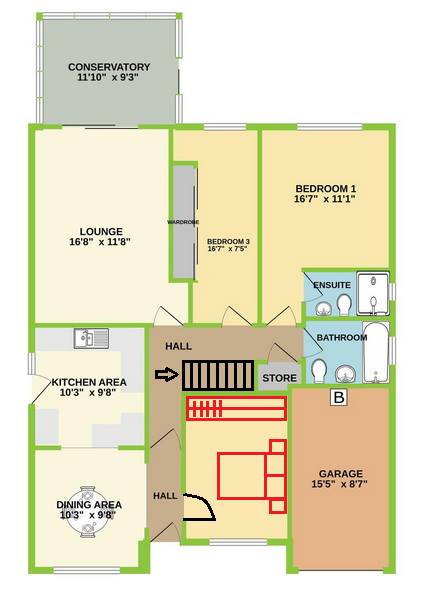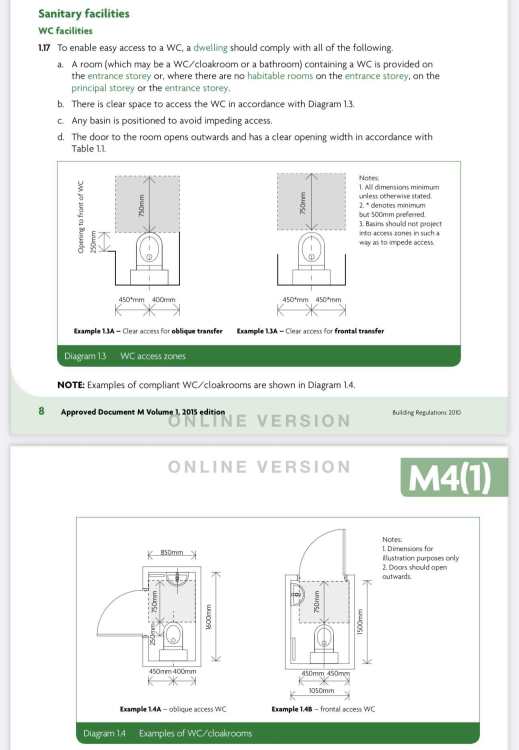-
Posts
1483 -
Joined
-
Last visited
-
Days Won
6
Everything posted by DevilDamo
-

What does this architectural symbol mean?
DevilDamo replied to Tony L's topic in Surveyors & Architects
Just ask the designer. At the same time, get them to amend the “fascia” vents label to “soffit” vents. -

Is this a load bearing wall?
DevilDamo replied to WhiskyInTheJar's topic in New House & Self Build Design
Why not poke your head through the loft hatch?- 14 replies
-
- load bearing
- structural
-
(and 1 more)
Tagged with:
-
Having read more into it, it appears you don’t need an existing building to benefit from those temporary PD rights. Is this outbuilding solely connected to the construction of the new dwelling and is not a storage container of furniture (for example) from the demolished dwelling?
-
If the existing house has been demolished, what PD rights are you trying to benefit from? PD rights cease to exist upon the demolition of a building.
-
In which case the outbuilding requires Planning. Assume no outbuilding was indicated on the main approval, which you could use to submit a Variation of Condition application?
-
Does the outbuilding not meet the PD requirements?
-

Solar pergola and permitted development?
DevilDamo replied to kentar's topic in Building Regulations
Correct but a maximum height of 2.5m when positioned within 2m of a boundary. -

Solar pergola and permitted development?
DevilDamo replied to kentar's topic in Building Regulations
What relevance does that have to do with the OP’s question on PD? -

Solar pergola and permitted development?
DevilDamo replied to kentar's topic in Building Regulations
Anything attached to the house would be deemed and treated as an extension, not an outbuilding. -

Neighbouring Balcony - Taken Down, About to be Rebuilt
DevilDamo replied to FC2407's topic in Planning Permission
Where have you got that information from? -

Architect won’t sign Completion Notice Form
DevilDamo replied to Oceanjules's topic in Building Regulations
Are you referring to the decelerations that the client, designer and contractor need to sign as part of the Dutyholders requirements? -

Extension over the garage on a Detached House
DevilDamo replied to George Clark's topic in Planning Permission
It depends upon your LPA’s policies. If it already comes forward, you can still make the front element appear sub-ordinate/servient. -

Variation of Condition CIL form request
DevilDamo replied to flanagaj's topic in Planning Permission
You need to answer it in conjunction with the previous CIL Form 1. -

floorplan change to accommodate dorma
DevilDamo replied to DWBungalow's topic in New House & Self Build Design
-
-
If your positive interpretation of that will help, then so be it. They would have suggested “minor” amendments if it would result in an approval.
-
What is the application for? There is no such thing as a free go anymore. Any revised application will attract a new application. Wait for the formal determination and address the reasons for refusal along with the additional information within the Officers’ Report. Then decide whether to re-submit or Appeal. In my opinion, a pre-application enquiry wouldn’t be of any benefit as the Officers’ Report should provide you with enough information.
-
https://mflinsurance.com/expertise/affinity/ciat/
-
Maybe so. But if that’s the OP’s end goal, then why beat around the bush!?!
-
Why don’t you just submit a Householder application for the erection of a detached annexe ancillary to the existing dwelling? One application, one fee, one Planning process, less headache?
-

You kidding me? £383 for two dumb conditions
DevilDamo replied to Alan Ambrose's topic in Planning Permission
Count yourself lucky the fee is per application and not per condition. The LPA still have to carry out consultations and the fee you pay nowhere near covers their fees in processing the application. And… you could have challenged to remove said conditions if you felt the information had already been provided. -

NMA rejected on basis it would breach condition x
DevilDamo replied to flanagaj's topic in Planning Permission
Why didn’t you submit the NMA application as I thought that is what you are/were doing to save costs? Just submit the one VoC that covers all items. -

NMA rejected on basis it would breach condition x
DevilDamo replied to flanagaj's topic in Planning Permission
Two things… - What made you think those changes would be considered as minor amendments? - Your LPA must be going through a very quiet phase if they’re turning around NMA applications within 2 days. Just submit a Variation of Condition application and deal with all the changes in one go. -
Are there any previous PD restrictions which relate to the outbuilding? If not, then providing you meet the PD requirements, then nothing to do with Planning. It would require Building Regulations.
-
But you are also assuming the gable is a projection where it could be and may well be on a flat elevation. Remember OS maps are not 100% accurate.





